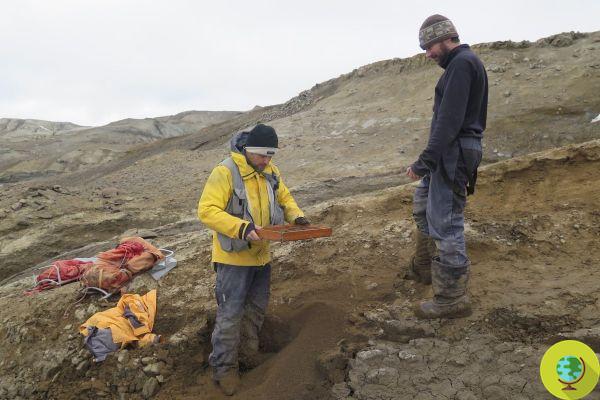Does the Loch Ness monster really exist? There is still hope for mystery lovers. A team of paleontologists recently discovered the remains of an ancient "Loch Ness monster" in the ice of Antarctica
He is about to end up run over, his mother saves himDoes the Loch Ness monster really exist? For mystery lovers there are still hopes. Recently a team of paleontologists discovered the remains of an ancient "Loch Ness monster" in the ice of Antarctica.
It is the prehistoric plesiosaur, a marine reptile that lived during the era of the dinosaurs and measured 11 meters from nose to tail. The one just found is the largest elasmosaurid known to date but also one of the longest-necked plesiosaurs.
"It was not only long enough but also quite stocky and weighed almost 15 tons" he said researcher José O'Gorman, a paleontologist from the Plata Museum and the National University of La Plata in Argentina.
Researchers discovered fossils of the huge plesiosaur on the island of Seymour in Antarctica in 1989 but the creature was so large and difficult to reach that it took three trips, in 2005, 2012 and 2017, to fully extract the samples. Scientists collected 800 kg of fossilized bones embedded in the rock and analyzed them.
This particular plesiosaur probably belongs to the genus Aristonectes, but scientists aren't sure and it could even be a new species. Given the striking resemblance to the legendary creature, the animal has been nicknamed Nessie.

Gallery
In addition, an American student recently claimed to have seen the legendary creature, or perhaps a distant relative of it, in Banff, in Canada's National Park in the western province of Alberta. The "monster" was photographed by 17-year-old Matthew D'Amico on an excursion to Banff, swimming thousands of miles away from his "home" in Scotland.
"All the hairs on my body stood on end when I saw what was in the water", he said Matthew. “After an hour hike, we took a break on a hill with a great view of Bow River, where my sister and I saw what looked like a prehistoric animal swimming, I pointed out what I was seeing and also she was shocked “.
The boy immediately took pictures. One of the images shows what looks like a neck sticking out of the water, or a simple reptile-like trunk.
Is this proof that the Loch Ness Monster exists?
The picture was taken in Canada…
@cfmradio ? pic.twitter.com/6gS2KylwbZ
— Josh Howells (@Joshuahowells) May 19, 2019
“I have the most accurate images of the Loch Ness monster from the famous 1933 photo,” added Matthew.
The first news related to the existence of this creature dates back to the sixth century, but the modern legend became famous after the first potential photo of Nessie, which emerged in 1934. Yet the various underwater surveys, with sonar and satellite tracking, have never been able to find reliable evidence of the existence of the Loch Ness monster.
The Loch Ness legend received new impetus in 1994, six decades after the iconic photo's appearance, when a man, Christopher Spurling, revealed that the new photo released was a joke and that he was involved in the production.
So far no certainty, only legends and sightings never fully proven ...
READ also:
- They call it 'chicken monster', but for us it is extraordinary! The rare images of him dancing in the depths
- The Loch Ness Monster is back… as an infuser for tea and herbal teas! (PHOTO)
Francesca Mancuso


























